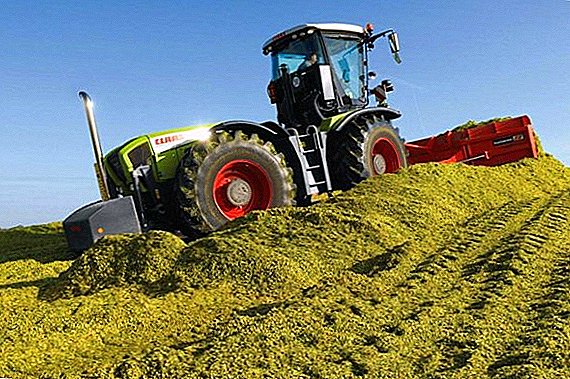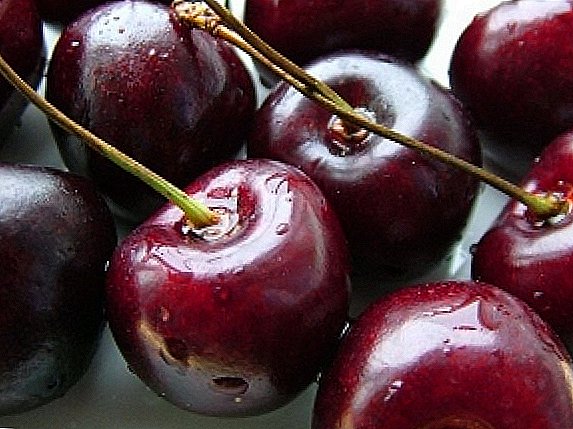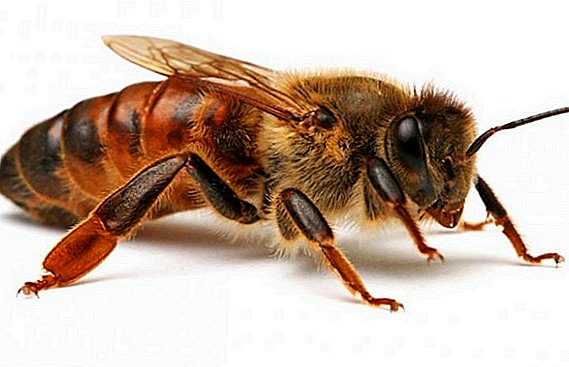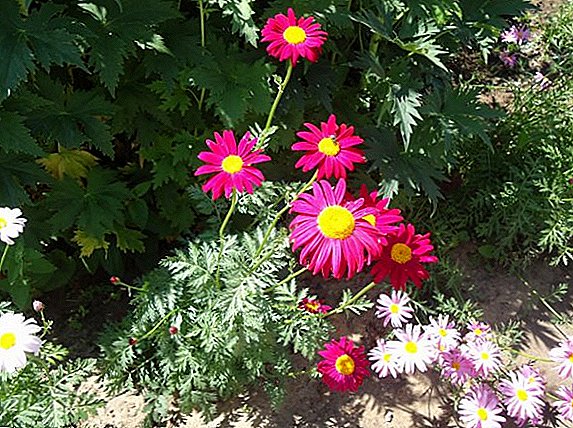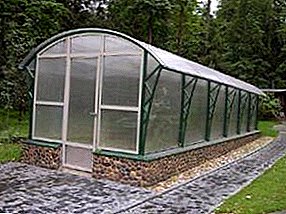
The arrangement of the greenhouse on the plot greatly prolongs the season of active gardener's work and allows you to shoot much greater yields.
Exists many options for creating such structures. However, most often there are designs of cellular polycarbonate mounted on galvanized metal profiles.
Polycarbonate and galvanized greenhouse
Many are interested in the question of the greenhouse with their own hands from polycarbonate and profile - Is it possible to make yourself. And also what profile to choose for the greenhouse from polycarbonate. As practice shows - to solve these issues is easy. Moreover, this option of greenhouses is gaining increasing popularity. Consider why.
Cellular Polycarbonate From the point of view of a gardener, it is attractive due to its physical characteristics:
- low weight, allowing to do without excessively powerful greenhouse frames;
- significant mechanical strength, prolonging the life of the building and making it more resistant to wind and even snow loads;
- excellent thermal insulation qualitiesdue to the presence of air in the cells of the panel.
The relatively high cost of the material does not reduce its attractiveness, since very soon all costs are fully compensated. The benefit is obtained from increased yields, as well as through rare repairs.
A small thickness of the metal is compensated by the presence of a protective coating of zinc oxides. Such protection will save the frame of the greenhouse from rotting for two or three seasons. After that, it will be cheaper to replace the rusted elements than initially spent on expensive frame materials.
In addition, to work with galvanized profiles do not require special skills. This allows build a greenhouse yourselfwithout spending money to pay professionals.
Among the shortcomings of greenhouses of this type, only turbidity of polycarbonate with time is noted, as well as the need to replace rotten frame elements. In the remaining moments of the greenhouse from polycarbonate galvanized profile - reliable and easy to manufacture.
Frame options
The following types of greenhouses made of cellular polycarbonate are the most practical in home gardens:
- wall, characterized by simplicity of design and durability;
- arched, allowing to use the plasticity of polycarbonate, but causing some difficulties in bending the metal frame;
- freestanding with gable roof.
The last option is the most common, since such a greenhouse can be located in any area of the site. At the same time its construction is quite simple for building with your own hands.
Preparatory work
All preparation for construction is divided into several stages.
- The choice of location. At this stage, choose the most sunny and protected from the wind place on the site. It is also desirable to focus on the geology of the soil. It is desirable that under the greenhouse there were layers of soil with high sand content. This will ensure drainage and reduce the level of humidity inside the greenhouse.
On the cardinal points, the greenhouse is positioned so that the slopes are facing south and north.
- Determination of greenhouse type. With all the simplicity of work with cellular polycarbonate and galvanized profile, the device of such a greenhouse will require at least several hours. Therefore, it makes sense to abandon the portable or temporary options. The best will be stationary greenhouse on a good foundation.
If necessary, the selected materials allow you to do garden work, even in winter. However, in this case it will be necessary to attend to the presence of the heating system and to foresee the possibility of summing up the necessary communications.
- Preparation of the project and drawing. If the greenhouse will be built seriously, for a long time and not from the remnants of the old material, the availability of project documentation would be highly desirable. Projects with a drawing will allow you to more accurately determine the volume of purchases of materials, as well as reduce the amount of waste. When applied to a drawing size need to focus on the typical dimensions of a sheet of polycarbonate(210 × 600 mm).
- Selection of foundation type. Reliable foundation will extend the life of the building several times. For greenhouses of the selected type, you can use several types of bases:
- columnar sections of concrete-filled asbestos-cement pipes buried in the ground;
- columnar brick or reinforced concrete blocks;
- tape With a slight increase in labor costs, strip foundations can increase the quality of operation of a polycarbonate greenhouse on a galvanized profile frame.
A photo
The photo shows a greenhouse from polycarbonate from the profile:






Construction technology
Allocate the following stages of construction of a polycarbonate greenhouse.
Preparation of materials and tools
From the materials will be necessary:
- sheets of transparent cellular polycarbonate;
- galvanized profile for racks (42 or 50 mm);
- sand;
- rubble;
- cement-sand mixture;
- board, plywood, chipboard or fiberboard.
Instruments:
- jigsaw;
- shuropovert;
- scissors for metal;
- building level and plummet;
- shovel.
A supply of nails for formwork, self-tapping screws for mounting the frame and hanging panels, as well as polycarbonate sheet connectors will also be needed.
Foundation device
 The shallow tape foundation is prepared as follows:
The shallow tape foundation is prepared as follows:
- on the selected place of the garden plot, the borders of the greenhouse are defined by cords and pegs;
- trench dug 20-30 cm deep;
- on the bottom of the trench is poured and ram sand cushion thickness of about 10 cm;
- formwork is put and fixed along the walls of the trench;
- poured a mixture of a solution of DSP and rubble.
In the process of pouring concrete is necessary immediately insert metal corners or pieces of pipes into it. In the future, they will be needed for fixing the frame of the greenhouse to the foundation. The position of these racks must comply with the conditions of the drawing.
Frame Mounting
The frame of the greenhouse is going in several steps:
- according to the drawings, galvanized sections of length are cut;
- with the help of screwdrivers and screws, the end walls of the greenhouse are assembled;
- the ends of the screws or welding are attached to the fastening elements of the foundation;
- horizontal beams and additional vertical frame drains are hung. In this case, it is recommended to use special “spider” fasteners, which allow to reliably connect galvanized profiles without the risk of their deformation.
Hanging polycarbonate
To do this, you need to do the following:
- according to drawing cut the sheets into elements of the desired size. You can use either a jigsaw or a circular saw. In the latter case, the disk must have teeth as small as possible;
- in the frame attachment points holes are drilled in polycarbonate. The distance from the hole to any of the edges of the sheet should not be less than 40 mm;
- the panel is put in place and fixed with screws with thermal washers.
The direction of the cells in the polycarbonate sheet must be such that the possibility of spontaneous condensate drainage is ensured.
It is allowed to use ordinary screws with caps of increased diameter. However, they are not too tight to polycarbonate, may eventually cause cracks in the plastic, and also do not have a special aesthetics.
The thermo washer is convenient by the presence of a wide plastic cap with a hole for the screw.
An additional annular gasket is installed under the cap, sealing the mounting location. Over the screw the decorative cap latches.
The optimal distance between attachment points is 25-40 cm.
It is unacceptable to use excessive force when installing sheets of polycarbonate. When tightening the screws, they also should not be turned to the full stop. A certain amount of free running between the elements of the greenhouse plating will allow the material to deform without consequences under the action of thermal expansion.
Neighboring polycarbonate sheets need sealing. This will eliminate the ingress of moisture into the cells of the panel, which is fraught with a decrease in the degree of light transmission and shortened service life. For sealing use special connecting strips.
The construction of a polycarbonate greenhouse is being completed with their own hands by installing a door and additional elements, if such are envisaged by the project. The door is often made of a piece of polycarbonate, reinforced from the inside with a metal profile.
The independent device of the greenhouse from cellular polycarbonate on a framework from a metal galvanized profile is a reasonable choice for the zealous owner. For a relatively small amount of money, it is possible to get a reliable, highly efficient and even outwardly attractive garden greenhouse.
We hope that our information will be useful to you and now you know what polycarbonate profile greenhouses are convenient for, how to assemble them yourself, what materials are required for this.


